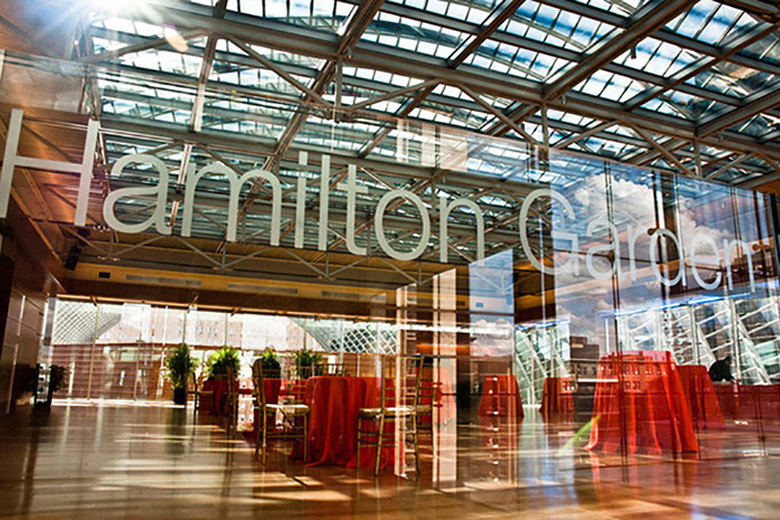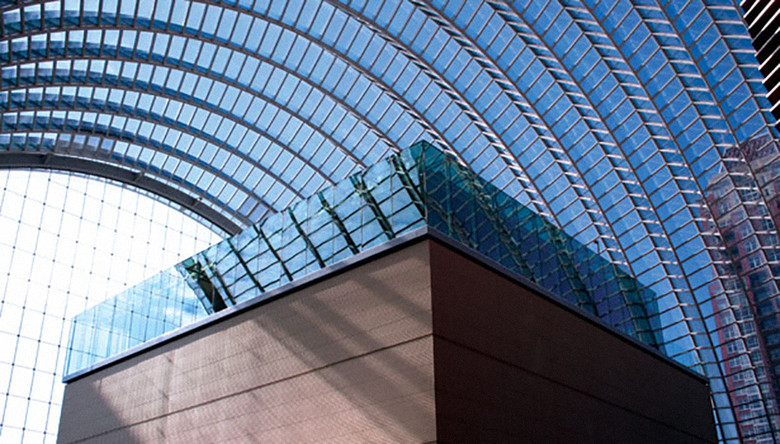SageGlass
John Hill
18. March 2013
Kimmel Center. Photo: Courtesy of Kimmel Center
Today's predilection for glass walls and roofs often results in glare and heat gain, two issues addressed typically through shades, louvers, and other means of blocking or cutting down on direct sunlight. SageGlass, an "electronically tintable dynamic glass," is an alternative that mitigates these issues while maintaining views through the glass. A couple recent installations—one in Philadelphia and one in Colorado—are highlighted here.
Easily the most dramatic part of Rafael Viñoly's 2001 design of the Kimmel Center for the Performing Arts in Philadelphia was the Dorrance H. Hamilton Rooftop Garden, sitting atop the Perelman Theater and below the barrel-vaulted glass enclosure. But the sunlight entering through the 4,100 panes of glass contributed to temperatures approaching 120ºF (49ºC) in the summer. Combined with noise disruptions from parties in the event space, the rooftop garden could only be rented out for less than 10 days a year.
Kimmel Center. Photo: Courtesy of Sage Electrochronics
In response to these issues (part of a larger master plan for the Kimmel by KieranTimberlake), the Hamilton Rooftop Garden has been enclosed by a glass box that mitigates the heat gain and sound disruptions. In their design for the enclosure BLT Architects opted for SageGlass—an "electronically tintable dynamic glass"—as a means to cut down on the direct sunlight entering the 2,100-sf (195-sm) column-free space for weddings and other events. The solution may seem like fighting fire with fire, but SageGlass maintains views from inside the space while keeping the interior comfortable even on hot days, a combination that mechanical shades, louvers, and other means have a more difficult time achieving.
To grasp the impact of SageGlass's adjustable tinting, here are a few photos of the Morgan Library expansion at Colorado State University, designed by Studiotrope Design Collective. SageGlass covers the two-story, west-facing elevation and can be controlled manually or via automatic sensors; the glass tinting is zoned so each floor can be controlled separately. Like the roof garden in Philadelphia, the study spaces at CSU benefit from the reduced glare and heat gain that SageGlass provides.
Related articles
-
Spotlight on Italy
on 5/16/18
-
Bologna Shoah Memorial
on 7/20/15

